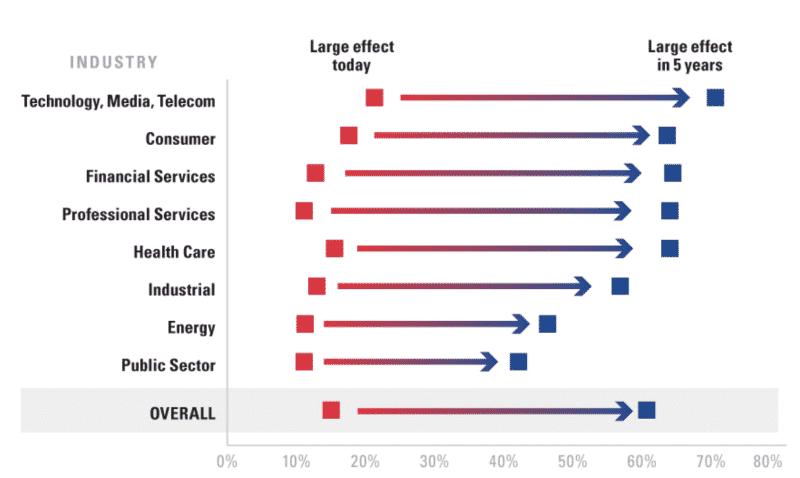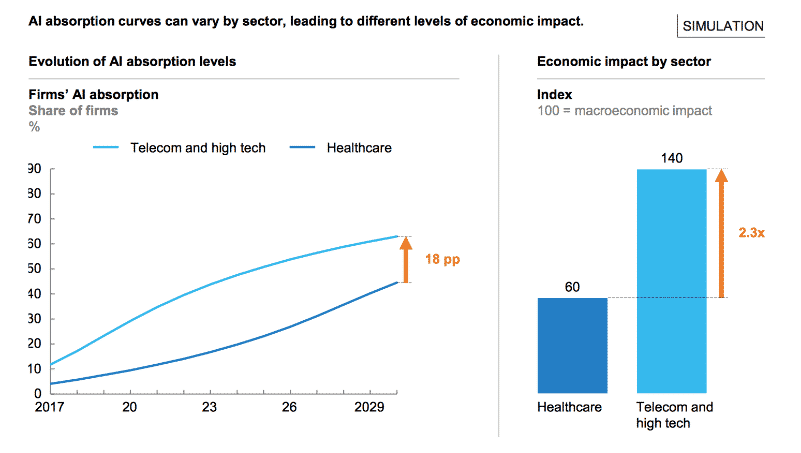A summary of insights from Harvard Business Review, MIT and McKinsey
Introduction
Wall Street, investors, technology gurus and data scientists – all have reasons to understand and predict growth and opportunities for artificial intelligence. After all, the growth of AI, and its application, will enable small and large industries to evolve considerably over the next two decades, thereby having a major impact on the global economy.
In this article we have summarized some important insights for you.
AI and growth
Every sector has a different adoption rate for AI, which leads to different levels of economic impact.

When comparing different industrial sectors from the figure above, we see:
- The Telecom and high-tech sectors adopt AI relatively quickly, followed by Consumer, Financial Services and Professional Services,
- Energy and public sector are the last to start the transition,
- All sectors can, according to MIT, obtain significant added value today by applying AI.
A compounding effect
When we zoom in on the long-term effects of this difference in adoption speed, it is striking that the early adopters’ lead in terms of economic impact will increase.

By 2030, a faster adoption of AI could, according to McKinsey, cause more than a doubling in terms of economic impact versus slower implementation of AI. The projected catch-up by healthcare will therefore not be able to compensate for the loss of return, despite the relatively high adoption rates in 2030.
Cause of these differences
In addition to macroeconomic aspects, the quest by companies for the right AI implementation approach plays a major role. Many companies are aware of the added value that AI can realize, but want to implement this step by step with a minimum impact on their HR policy, and with a maximum of control over the course and result of the AI application.
Other organizations have already started with AI, but are still struggling whether the typical project approach scales well when they want to apply AI to different business cases.
Trendskout has long understood this, and therefore offers an immediately deployable AI solution that adapts to the needs and context of the organization, regardless of their adoption speed of AI.
Sources:
- https://ec.europa.eu/growth/tools-databases/dem/monitor/sites/default/files/DTM_AI%20USA-China-EU%20plans%20for%20AI%20v5.pdf
- https://hbr.org/insight-center/interacting-with-ai
- https://sloanreview.mit.edu/projects/reshaping-business-with-artificial-intelligence/

